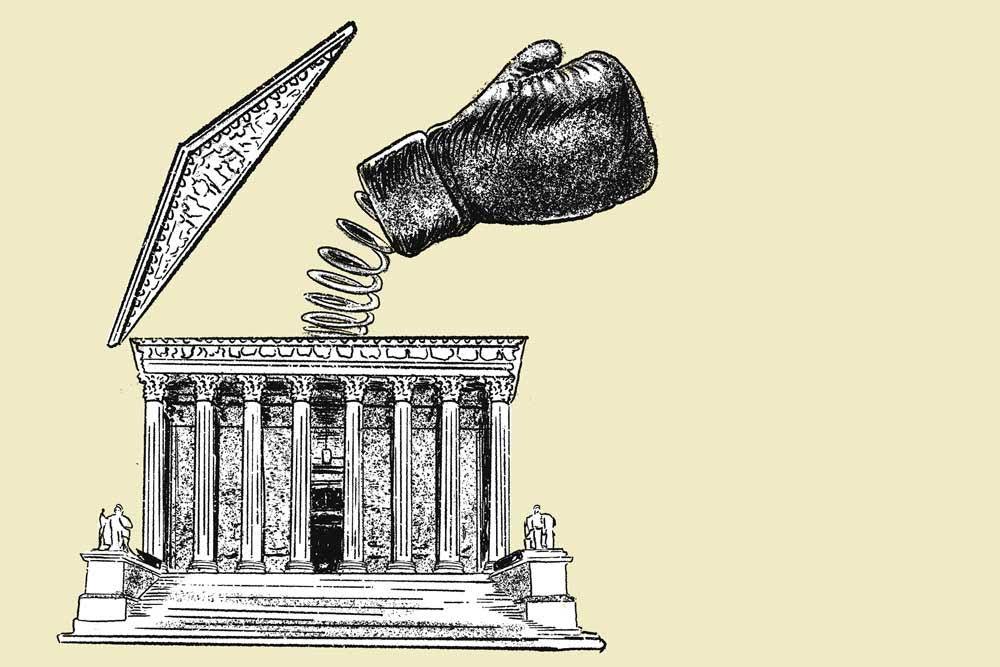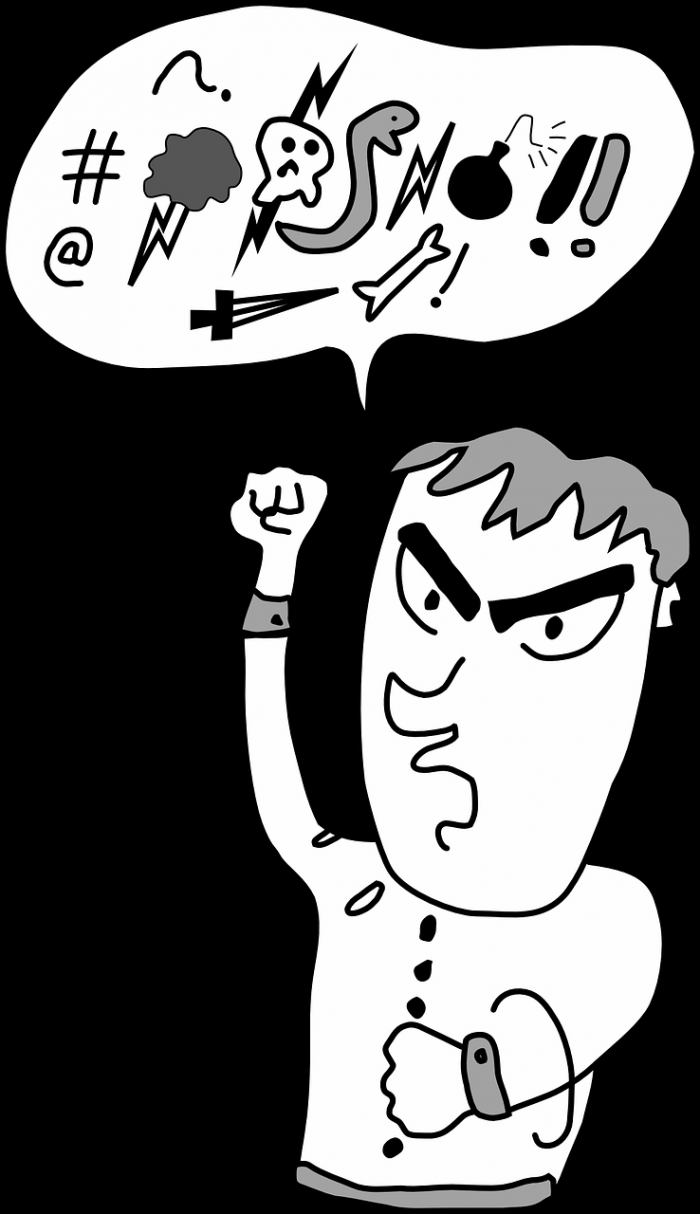Gravity of the Evil Test
The gravity of the evil test is a refinement of Justice Oliver Wendell Holmes’s clear and present danger test for determining when the First Amendment right of free speech may be subject to criminal prosecution.
Judge Hand crafted the test based on the gravity of danger and its probability

Judge Learned Hand, in United States. v. Dennis (2d Cir. 1950), originally crafted the new test in a federal appellate decision examining the prosecution of officers of the Communist Party of the United States for espousing the revolutionary overthrow of the government. Chief Justice Frederick M. Vinson’s plurality opinion adopted the test in the Supreme Court’s own decision on appeal in Dennis v. United States (1951).
Under the clear and present danger standard, regulation of speech is possible where “the words used are used in such circumstances and are of such a nature as to create a clear and present danger that they will bring about the substantive evils that Congress has a right to prevent.” But the requirement that a danger be present, often defined to mean imminent, rendered awkward Cold War era prosecutions under the Smith Act of 1940, since few if any Communist sympathizers were advocating imminent violence.
Judge Hand’s refinement directs courts to ask “whether the gravity of the ‘evil,’ discounted by its improbability, justifies such invasion of free speech as is necessary to avoid the danger.” Judge Hand is famed for bringing economic thinking such as cost-benefit analysis into the process of legal reasoning. The almost algebraic quality of his analysis in Dennis reflects that approach — gravity multiplied by probability yields a given quantum of danger. Mathematically, even a small probability could justify suppression of speech, if the supposed harm is grave enough.
Free speech advocates had considered Hand a judicial hero in light of opinions such as that in Masses Publishing Co. v. Patten (S.D.N.Y. 1917). Nevertheless, in the immediate postwar period, Hand thought it reasonable to believe the Communist Party was a “conspiracy [which] create[d] a danger of the utmost gravity and of enough probability to justify its suppression.” The Supreme Court agreed.
Some complained the new test distorted the clear and present danger test
Justice William O. Douglas, reflecting the opinion of most civil libertarians, later complained that Hand’s new test was “distorting the ‘clear and present danger’ test beyond recognition,” and that in Dennis and elsewhere, “the threats were often loud but always puny and made serious only by judges so wedded to the status quo that critical analysis made them nervous.”
The gravity of the evil test — or the not improbable test — has occasionally been referenced in subsequent years, including in the Supreme Court case of Nebraska Press Association v. Stuart (1976). However, both the clear and present danger test and its grave though improbable variant have been replaced by the standard established in Brandenburg v. Ohio (1969), under which speech can be criminalized only upon a showing that it constituted intentional advocacy ofimminent and likely lawlessness.
This article was originally published in 2009. Ronald Steiner (Ph.D. Political Science, University of Minnesota; J.D., University of Southern California) is Professor and Director of Graduate Legal Education at the Fowler School of Law at Chapman University, where he teaches constitutional law and other topics in law and political science.
cited https://mtsu.edu/first-amendment/article/963/gravity-of-the-evil-test
To Learn More…. Read MORE Below and click the links
Learn More About True Threats Here below….
We also have the The Brandenburg v. Ohio (1969) – 1st Amendment
CURRENT TEST = We also have the The ‘Brandenburg test’ for incitement to violence – 1st Amendment
We also have the The Incitement to Imminent Lawless Action Test– 1st Amendment
We also have the True Threats – Virginia v. Black is most comprehensive Supreme Court definition – 1st Amendment
We also have the Watts v. United States – True Threat Test – 1st Amendment
We also have theClear and Present Danger Test – 1st Amendment
We also have theGravity of the Evil Test – 1st Amendment
We also have the Elonis v. United States (2015) – Threats – 1st Amendment
Learn More About What is Obscene….
We also have the Miller v. California – 3 Prong Obscenity Test (Miller Test) – 1st Amendment
We also have the Obscenity and Pornography – 1st Amendment
Learn More About Police, The Government Officials and You….
We also have theBrayshaw v. City of Tallahassee – 1st Amendment – Posting Police Address
We also have thePublius v. Boyer-Vine –1st Amendment – Posting Police Address
We also have the Lozman v. City of Riviera Beach, Florida (2018) – 1st Amendment – Retaliatory Police Arrests
We also have the Nieves v. Bartlett (2019) – 1st Amendment – Retaliatory Police Arrests
We also have the Freedom of the Press – Flyers, Newspaper, Leaflets, Peaceful Assembly – 1st Amendment
We also have the Insulting letters to politician’s home are constitutionally protected, unless they are ‘true threats’ – 1st Amendment
We also have the Introducing TEXT & EMAILDigital Evidencein California Courts – 1st Amendment
We also have the First Amendment Encyclopedia very comprehensive – 1st Amendment
ARE PEOPLE LYING ON YOU? CAN YOU PROVE IT? IF YES…. THEN YOU ARE IN LUCK!
We also have the Penal Code 118 PC – California Penalty of “Perjury” Law
We also have theFederal Perjury – Definition by Law
We also have the Penal Code 132 PC – Offering False Evidence
We also have the Penal Code 134 PC – Preparing False Evidence
We also have thePenal Code 118.1 PC – Police Officers Filing False Reports
We also have the Spencer v. Peters– Police Fabrication of Evidence – 14th Amendment
We also have the Penal Code 148.5 PC – Making a False Police Report in California
We also have the Penal Code 115 PC – Filing a False Document in California
Know Your Rights Click Here (must read!)
Under 42 U.S.C. $ection 1983 – Recoverable Damage$
42 U.S. Code § 1983– Civil Action for Deprivation of Right$
$ection 1983 Lawsuit – How to Bring a Civil Rights Claim
18 U.S. Code § 242 – Deprivation of Right$ Under Color of Law
18 U.S. Code § 241 – Conspiracy against Right$
$uing for Misconduct – Know More of Your Right$
Police Misconduct in California – How to Bring a Lawsuit
New Supreme Court Ruling – makes it easier to sue police
RELATIONSHIPWITH YOURCHILDREN& YOURCONSTITUIONAL RIGHT$ + RULING$
YOU CANNOT GET BACK TIME BUT YOU CAN HIT THOSE PUNKS WHERE THEY WILL FEEL YOU = THEIR BANK
We also have the 9.3 Section 1983 Claim Against Defendant as (Individuals) — 14th Amendment thisCODE PROTECTS all US CITIZENS
We also have the Amdt5.4.5.6.2 – Parental and Children’s Rights 5th Amendment thisCODE PROTECTS all US CITIZENS
We also have the 9.32 – Interference with Parent / Child Relationship – 14th Amendment thisCODE PROTECTS all US CITIZENS
We also have the California Civil Code Section 52.1Interference with exercise or enjoyment of individual rights
We also have the Parent’s Rights & Children’s Bill of RightsSCOTUS RULINGS FOR YOUR PARENT RIGHTS
We also have a SEARCH of our site for all articles relatingfor PARENTS RIGHTS Help!
Contesting / Appeal an Order / Judgment / Charge
Options to Appealing– Fighting A Judgment Without Filing An Appeal Settlement Or Mediation
Cal. Code Civ. Proc. § 1008 Motion to Reconsider
Penal Code 1385 – Dismissal of the Action for Want of Prosecution or Otherwise
Penal Code 1538.5 – Motion To Suppress Evidence in a California Criminal Case
CACI No. 1501 – Wrongful Use of Civil Proceedings
Penal Code “995 Motions” in California – Motion to Dismiss
WIC § 700.1 – If Court Grants Motion to Suppress as Evidence
 Epic Criminal / Civil Rights SCOTUS Help – Click Here
Epic Criminal / Civil Rights SCOTUS Help – Click Here
 Epic Parents SCOTUS Ruling – Parental Rights Help – Click Here
Epic Parents SCOTUS Ruling – Parental Rights Help – Click Here
